

 |
Cookham is an attractive riverside village, lying on the Berkshire side of the Thames, upstream of Cookham Lock. It is a popular destination for boaters as there is a long stretch of moorings above the bridge. The first section could prove difficult for tall boats as there is a line of trees edging the footpath. Fortunately those available by the meadow are open though with less depth in places. An overnight mooring fee is charged. The village itself is only a short walk away.
Looking down the High Street at the many 17th and 18th Century houses. |
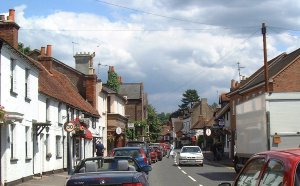 |
 |
At the crossroads at one end of the village is the strange Tarry Stone. This is a huge piece of sarsen stone which was placed here in 1909. It is said that Sports were held around it when it was in its original position in the village in Medieval times. |
Not far away is the old Wesleyan Chapel, which in 1962 was opened as an Art Gallery, displaying the work of local artist Stanley Spencer. Cookham featured in many of his paintings, as did many of the inhabitants of the village. It is worth a visit. |
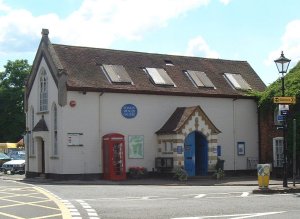 |
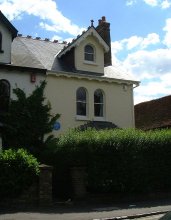 |
A little further along the High Street is Fernlea, the house in which Stanley Spencer was born. |
His gravestone can be seen in the nearby churchyard of Holy Trinity Church. |
 |
Holy Trinity Church, a short walk from the riverside moorings, is constructed mainly with stone and faced flint.There may have been a church here in Saxon times,but the first mention of a church is in the Domesday Book. | 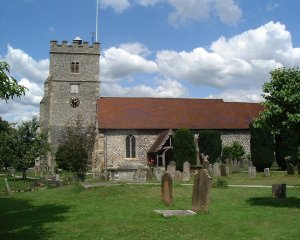 |
The square Perpendicular Tower holds eight bells and is unusual in that it displays both a clock and a sundial. Part of the Nave is Norman whilst most of the remainder of the building dates from the 16th century. |
Cookham has no dedicated General store, though the shop at the High Street garage is well stocked. A walk up the hill to Cookham Rise is necessary for more extensive shopping. There are however several restaurants and pubs which serve meals. | |
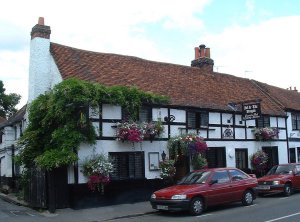 |
 |
The Bel and the Dragon |
The King's Arms with its gaudy sign |
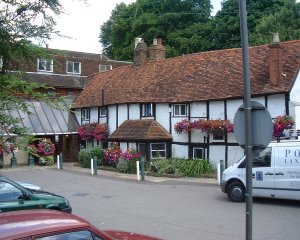 |
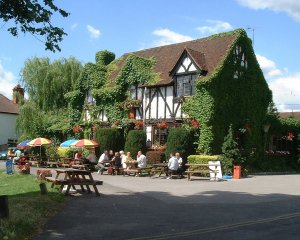 |
The Ferry situated by the river |
The Crown |
It is well worth taking a walk upstream of the moorings towards Cock Marsh and Winter Hill. Cock Marsh is owned and managed by the National Trust as a Nature Reserve. It has been grazed as commonland since 1272. There are helpful notice boards giving advice on what can be found on the marshland. Winter Hill affords a great view over the Thames Valley. Going downstream there is a five mile walk from Cookham, called the Green Way, which leads to the riverside village of Bray. |
Downstream of the moorings and crossing the river is Cookham Bridge. This iron bridge built to replace a wooden bridge, was erected in 1867. It remained a toll bridge until the 1950s. The Toll House still exists and can be found on the Bourne End side of the bridge. Recently it has been repainted an attractive blue. | |
 |
 |
Downstream of the bridge the river splits into 4 separate channels, combining as one as it passes through the spectacular wooded Cliveden Reach. Hedsor Water, the left hand branch, was the original navigation channel. Hedsor Wharf was extremely important for trade for five hundred years. This all came to an abrupt end when a lock was opened in the next channel in 1830. Hedsor Water was blocked by a weir, all traffic by-passed Hedsor Wharf as they headed for the new lock and consequently its owner, Lord Boston ended all trading on the Wharf. There is an original lock house at the tail end of Hedsor Water. This unique single-roomed dwelling was hewn out of the chalk cliff face. Unfortunately as Hedsor Water is private, it is not possible to see it. The two right hand channels pass either side of Formosa Island, which can be reached by a footpath from Cookham. The left hand of these two channels leads to Odney Weir. The extreme right hand channel was once the millstream to Cookham Paper Mill, which used to ship out its paper from Hedsor Wharf. | |
 |
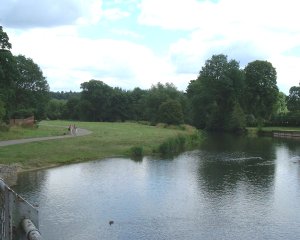 |
Cookham Lock |
Formosa Island |
Click here to return to:
| Places to visit |
|---|
Copyright © The Harts